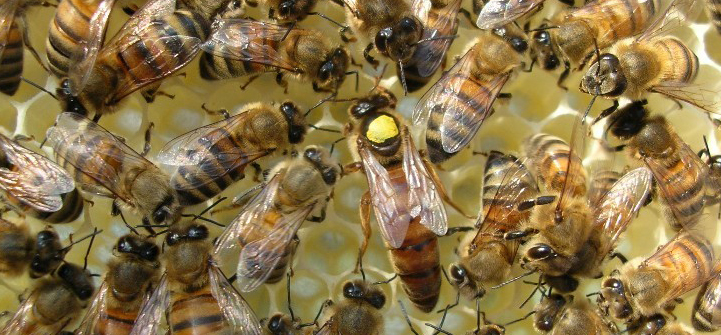
Beekeepers are almost by definition curious individuals. The nature of beekeeping, as with any environmental relationship, is complex. Even some of the most experienced beekeepers are confounded by the mysteries of a bee hive. That is what makes honey bee research a rewarding and never-ending journey.
Below is a list of commonly asked questions and links to the best answer at the time it was asked. As more information becomes available, perceptions shift, and may render a formerly correct answer invalid. The following list is only a starting point and one should always seek a second opinion on any difficult or important subject. Local knowledge is especially important as geographical variables cannot be resolved in this universal forum. If your question is not listed below, consider using the Ask an Expert function.
- Are there plants that produce nectar that is poisonous to either honey bees or humans?
- How can bees make honey from nectar that is poisonous to them?
- What is the life cycle of the bumble bee?
- How can farmers, gardeners, and applicators reduce risks of honey bee injury from pesticide application?
- What steps can beekeepers take to protect their colonies from pesticide injury?
- How can I tell the difference between small hive beetle larvae and wax moth larvae?
- What are wax moths and what kind of damage do they make in a hive?
- How many bee hives do I need to pollinate a crop?
- What causes purple brood?
- What is a “pollen bee” or a “non-apis” bee?
- Has research been done on comparing 5.4 mm comb cell size with 4.9 mm?
- What are small hive beetles and where did they come from?
- What is the best way to introduce a queen into a colony?
- What plants in my vegetable garden attract or need bees?
- What are some suggestions for keeping bears out of active beehives?
- What is causing the decline of honey bee populations?
- What is a toxic reaction to bee stings?
- What is the difference between a normal reaction to a honey bee sting and an allergic abnormal reaction?
- How long do worker honey bees live?
- Which pesticide formulations are least hazardous to honey bees?
- How many times does a queen honey bee mate?
- The drone has no father but has a grandfather. How is that?
- What crops do not require honey bee pollination?
- Why is honey different colors?
- I have bees in my house. How can I get rid of them without killing them?
- I have honey bees in a tree. Can I remove them and keep the bees?
- Will honey bee swarms in my yard move into a hole in the wall of my house?
- What is the basic life cycle of the fungus Ascosphaera apis that causes chalkbrood disease in honey bees colonies?
- Why do newly installed packages of bees seem to abscond more than well-established hives?
- How do honey bees use pheromones to communicate?
- How are queen bees raised and mated?
- Can a honey bee be born without the aid of a drone?
- Does honey have nutritional value?
- If honey is crystallized (solid) has it gone bad?
- What is Nosema disease?
- How do I know whether my bees have Nosema disease?
- How is Nosema disease treated?
- How do honey bees make wax?
- What are some ways to reduce the population of Varroa mites in honey bee colonies, without the use of pesticides?
- What is raw honey?
